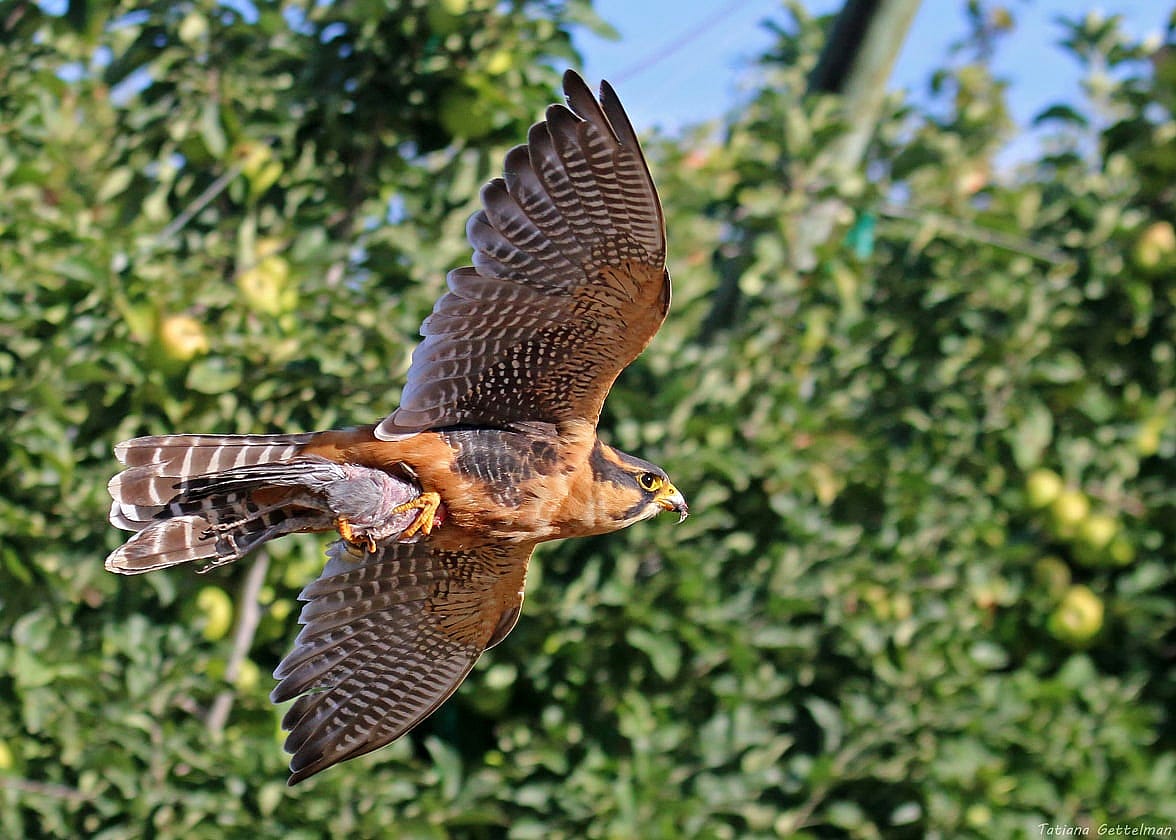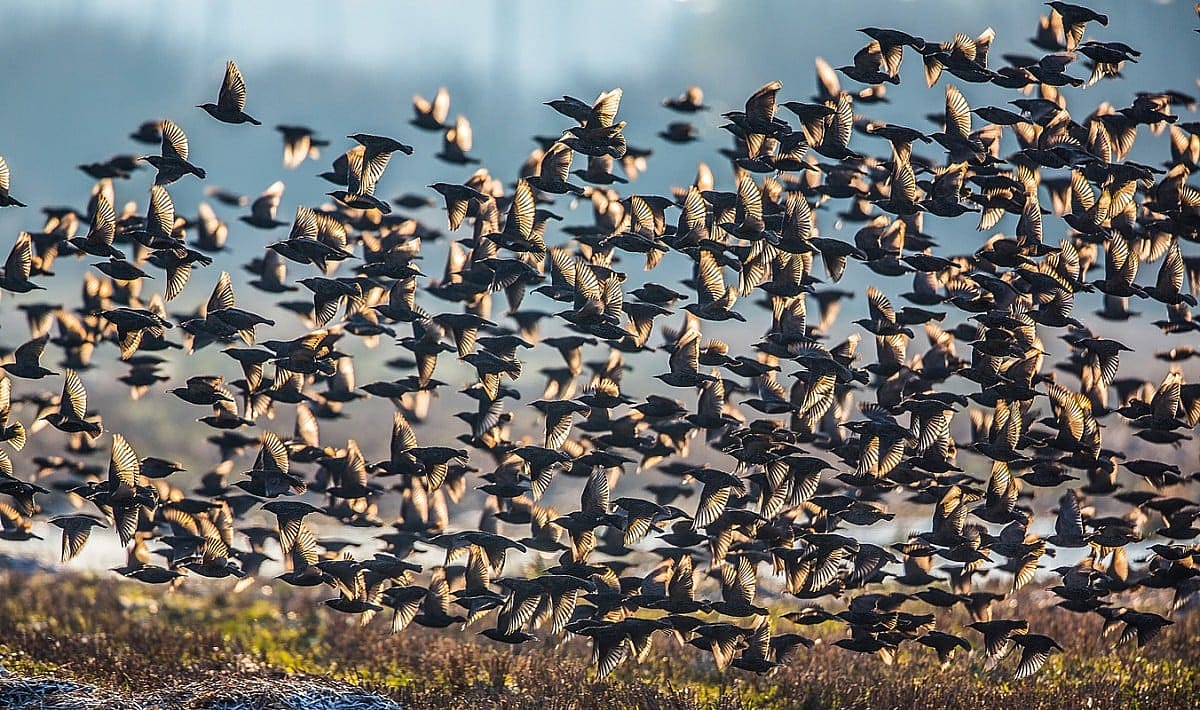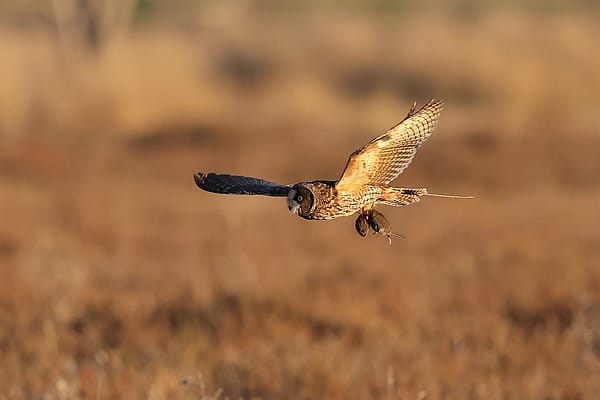
Abatement, the Working Raptor
Raptors worldwide regularly dine on a wide variety of prey. In the wild we can thank raptors such as Red-tailed Hawks and Rough-legged Hawks for killing thousands of pests including mice, rats, and voles. Many urban areas can give credit to peregrine falcons for helping out with their pigeon and starling problems. Across the globe, humans spend billions of dollars to kill or deter pest animals from their farms and fields. Although chemicals are the most common way to fight this battle, there is an alternative and it’s becoming more and more popular – “abatement.” Abatement is a process that uses trained raptors to chase other animals from an area.
Humans have taken advantage of the natural behavior of raptors, working with them for over 4,000 years through the sport of falconry. Falconry uses trained hawks, eagles, and falcons for the purpose of hunting. Now, abatement has developed from the sport of falconry to become a great alternative to those chemical pesticides. Many farms, vineyards, parks, landfills, industries, airports, and cities are employing professionals with specially trained falcons or hawks to deter or chase away undesired birds. Often just the presence of a raptor is enough to scare off problem birds. Nuisance species may include Starlings, pigeons, doves, gulls, crows, berry eating birds such as robins, and waterfowl such as Canada geese. Many species of raptors are used in abatement. A few species are aplomado falcons, peregrines, Harris’ hawks, prairie falcons, and even hybrids. Bird abatement services require a U.S. Fish and Wildlife Service Falconry Abatement permit for all handlers. These services are one of the safest and most highly effective techniques, which also has a low environmental impact.
One of the most famous uses of an abatement raptor may be Wimbledon’s Harris’ hawk. Pigeons would often stop play at the famous Wimbledon Tennis Courts in England. Since 2000, however, this is no longer a problem. Enter Rufus, the Harris’ hawk whose job it is to clear pigeons from the tennis courts at Wimbledon. Rufus works the courts all year long, but during the major Grand Slam Tournament his work day starts at 5:00 AM.
Enjoy the two videos below that feature Rufus, Wimbledon’s Abatement Hawk:
- The top photo attached to this short article about Rufus, will load into a video, so wait for it: http://www.cnn.com/2017/07/13/sport/rufus-the-hawk-wimbledon-tennis-center-court/index.html
- https://www.youtube.com/watch?v=CST629ad4bU
Rufus is so loved, that he even has his own Twitter and Facebook pages. For additional information about Rufus, you may enjoy this article: http://www.telegraph.co.uk/tennis/wimbledon-reaction/rufus-the-hawk-wimbledons-official-bird-scarer/
The Valero McKee Refinery in Texas has a problem each fall and winter with European starlings. The robin-sized songbirds are drawn by the thousands to the refinery each year by the sufficient lighting, lack of predators, and warmth. It is during the cold months that the starlings become pests – creating hazards due to their droppings. These droppings around their roosts (where the birds gather at night) create slippery walking surfaces. In addition, the acid content of their droppings is corrosive to metal, paint, concrete, and other materials. A fungal respiratory disease called Histoplasmosis, or Darling’s Disease, can also be caused by the spores in the droppings.
After trying a number of methods to discourage the roosting starlings, the refinery turned to a professional abatement business and its Harris’ hawks. First, laser lights are used to move the starlings away from areas that may present a hazard to the hawks. Once the starlings resettle into safer locations, the hawks are let loose to hunt. Flown into the roost areas, the starlings are chased from the refinery. Valero McKee reports that after a 2-week period, the starlings are convinced that the refinery is no longer safe, and will abandon the refinery for that year.

Farmers and vineyards use abatement to keep unwanted birds away from their crops. Millions of dollars are lost each year to crop damage by birds. In California, the U.S. Department of Agriculture estimates that birds cause $49 million in losses to California’s wine-grape harvests each year. It is estimated that millions more dollars in damage is done to the state’s cherry and blueberry farms as well. Across the country, millions of dollars in damage are done to sugary fruits, including apples, as well as other crops like grains. Methods such as flash tape, loud noises, recordings of birds in distress, and even scare crows have been tried by many farmers, who may eventual give Raptor Abatement a try.
Studies have shown that birds seem to get used to anything that doesn’t change day by day. Raptors, however, will always get the attention of nuisance birds. Abatement falcons and hawks are specifically trained to swoop in high dives from above or fly low across fields to create panic, scaring the pest birds off. Typically, abatement birds are trained to chase, not kill and eat, the birds they are chasing. For abatement raptors, the food reward comes from the handler after a job well done. Abatement raptors may be flown over fields for hours a day, and for many days or even weeks at a time, which can become quite expensive. Many farmers who use this method, however, feel the cost is worth the results. The constant pressure encourages pest birds to look for meals elsewhere.
Watch a short informative video on Raptor Abatement used in agriculture: https://www.youtube.com/watch?v=xhIBS7XqeAA
In addition to the examples I have highlighted, bird abatement is highly effective in clearing airfields before take offs and landings to prevent bird/plane collisions. Abatement can also be used to prevent gulls or crows from carrying off trash from landfills, to keep pigeons off building ledges in cities, birds off gulf courses and resorts, and many other situations where birds become pests. In the photo below Gary Railton’s Harris’ hawk, George, works at the Houses of Parliament in Great Britain. His job is to keep pigeons and gulls from damaging the stonework with their droppings or causing problems on the terraces.
Watch a video of Gary and George at work here:
www.youtube.com/watch?v=KiJJI_WipO0
The use of raptors for Bird Abatement is safe, natural, humane, and highly effective. It’s not surprising, then, that abatement is growing in popularity in many areas.
Photos:
Aplomado Falcon looking down over a field by Tatiana Gettelman, Attribution, NonCommercial, ShareAlike License, https://www.flickr.com/photos/tatiana-gettelman/
Rufus the Wimbledon’s Hawk by BBC World Service, Attribution, NonCommercial License, https://www.flickr.com/photos/bbcworldservice/
Starling flock by scyrene, Attribution, NonCommercial, NoDerivitive license, https://www.flickr.com/photos/scyrene
Aplomado Falcon with robin by Tatiana Gettelman, Attribution, NonCommercial, ShareAlike License, https://www.flickr.com/photos/tatiana-gettelman/
Aplomado Falcon perched in apple orchard by Tatiana Gettelman, Attribution, NonCommercial, ShareAlike License, https://www.flickr.com/photos/tatiana-gettelman/
Written By
Anne Hay
Anne Hay has a Bachelor's degree in Elementary Education and a Master's in Computers in Education. She spent most of her working years teaching third grade at Livingston School in Cody, Wyoming. After retiring she began doing a variety of volunteer work for the Buffalo Bill Center of the West’s Draper Natural History Museum. Anne loves nature and has a concern for the environment. She believes that educating the public, so that they will have a better understanding and appreciation for the natural world, is very important. Because of this belief, volunteering at the Center is a perfect fit. She spends time in the Draper Lab, observing eagle nests for Dr. Charles Preston’s long-term research project on nesting golden eagles, writing observation reports of raptor sightings in the Bighorn Basin, and working with the Draper Museum Raptor Experience. Anne states that, “Having a bird on my glove, is one of my all time favorite things in life.”















